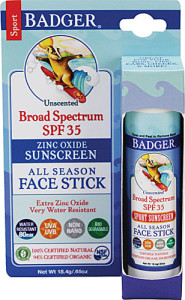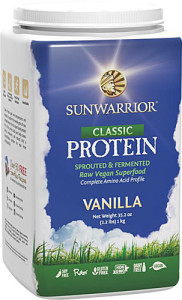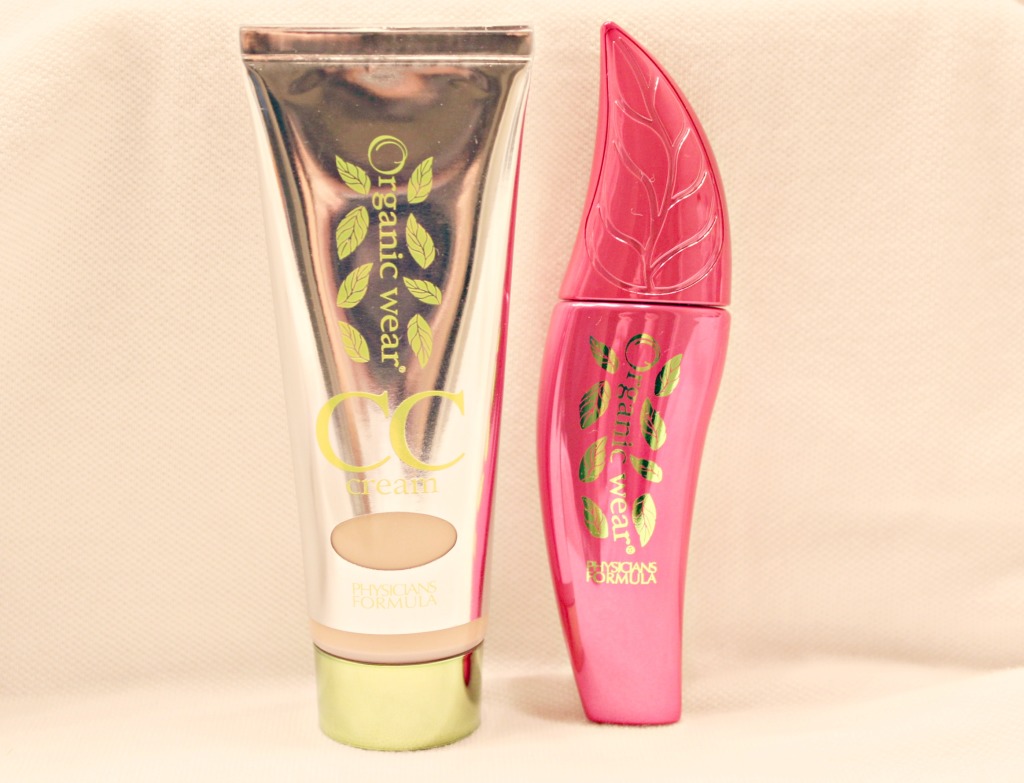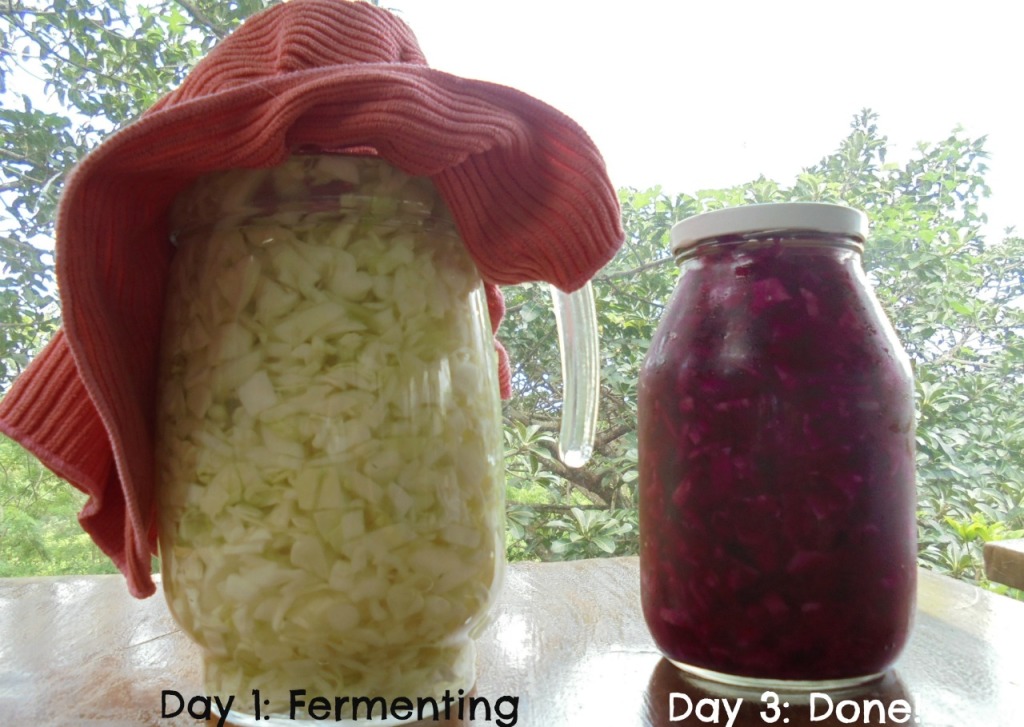TODAY is our 17th wedding anniversary! Hooray! Seventeen amazing years. Jayson and I have experienced many wonderful things together. During our time together we have lived in TWELVE different homes, in FOUR different states. We have loved SIX sweet dogs and ONE beautiful son! Through thick and thin, our marriage has strengthened and our friendship grown. I feel very lucky to be married to my best friend. Jayson makes me laugh every SINGLE day and always makes me feel special, beautiful, and loved. It’s pretty wonderful to get to spend your time with someone you enjoy so much. Happy seventeen years Mr. Lyon – I love you!
Tag Archives | wellness
Alarming Effects of Indoor Air Pollution
Indoor air pollution can stem from a variety of causes, some of which may be surprising such as toiletries. Mainly, though, the quality of air indoors is the result of a push and pull between the ventilation system and pollutants found inside the house or building.
There are a lot of other contributing factors to indoor air pollution, and not many people are aware of just how dangerous such a condition at home can be. In fact, more than half of the deaths caused by exposure to air pollution can be attributed to indoor air pollution. Let’s take a look at its alarming effects.
Effects on Health
People spend a lot of their time indoors, and if the quality of air inside homes and office buildings is not good, it could have negative effects on health. Repeated exposure to indoor pollutants can lead to both immediate and long-term health concerns, particularly respiratory problems such as asthma. The World Health Organization (WHO) reported in 2012 that 4.3 million people a year die prematurely from sickness and health problems that are attributable to household air pollution.
Effects on the Environment
In the poorest areas around the world, indoor air pollution is a silent but deadly tyrant. Largely generated by inefficient and poorly ventilated stoves that burn wood and other biomass fuels, it not only is responsible for the deaths of an estimated 1.6 million people a year, it also adds to the build-up of greenhouse gases in the earth’s atmosphere which contributes to climate change. Furthermore, the continued use of biomass fuels exacerbates deforestation, which, in turn, can lead to loss of biodiversity and soil erosion among others.
Preventing Indoor Air Pollution
With the many dangers that indoor air pollution poses, it is imperative for everyone to find ways to minimize or completely obliterate harmful pollutants in the home. One way of doing this is by simply improving ventilation in the home. Using high quality air filters and changing them regularly ensures that the air you breathe indoors is clean and healthy.
Changing from solid fuels to cleaner technologies is another way. This not only greatly reduces indoor air pollution; it also minimizes environmental impacts of energy consumption as well as production in general.
Increasing public awareness of the effects that indoor air pollution has on both human health and the environment is a vital factor for change.
Full Disclosure: This post was sponsored post by Filterbuy.com
Please share:
- Click to share on Facebook (Opens in new window) Facebook
- Click to share on Pinterest (Opens in new window) Pinterest
- Click to share on X (Opens in new window) X
- Click to share on LinkedIn (Opens in new window) LinkedIn
- Click to share on Reddit (Opens in new window) Reddit
- Click to share on Pocket (Opens in new window) Pocket
- Click to share on Tumblr (Opens in new window) Tumblr
- Click to email a link to a friend (Opens in new window) Email
- Click to print (Opens in new window) Print
Save Money this Summer on Terrific Summer Eco-Goods at Vitacost
Summer is in full swing! With our summer schedule jam packed, we have been ordered a lot of our favorite supplies online. It’s just too easy to order whatever we need online and then spend the day at the beach. A couple of days later, everything we need has been conveniently delivered to our front door.
Lately I have been checking out Vitacost, they are a terrific online source for all sorts of eco-friendly and healthy products at discounted rates. Prices are up to 50% less than they would be at other retail shops. They have eco-friendly cleaning products, cosmetics, vitamins, supplements, health foods, and a lot more. Here are some of the summer products that I think are too good to miss:
Summer sun protection is a high priority for my family and me. I’m really impressed by the savings of up to 39% that Vitacost is offering on a wide range of sun products. They have all sorts of the natural product lines that I look for, like Badger, Kiss My Face, Alba, and a whole lot more.
 I really like this All Season Face Stick from Badger. It’s certified natural, contains organic ingredients with non-nano zinc oxide and is biodegradable. Just look at the rave online reviews – I’m not the only one who loves this product!
I really like this All Season Face Stick from Badger. It’s certified natural, contains organic ingredients with non-nano zinc oxide and is biodegradable. Just look at the rave online reviews – I’m not the only one who loves this product!
Vitacost has just about any natural home cleaning product you could possibly think of. The selection is enormous, and the prices are all excellent. From laundry detergent, to dish soap, to all-purpose cleaners, the selection is endless and the prices are unbelievable.
 Take this dish soap. I can’t believe the current sale price of $2.89 on this Seventh Generation Natural Dish Liquid. As most environmentally conscious people have learned, natural products are often more expensive than mainstream products but this website really proves that to be a fallacy.
Take this dish soap. I can’t believe the current sale price of $2.89 on this Seventh Generation Natural Dish Liquid. As most environmentally conscious people have learned, natural products are often more expensive than mainstream products but this website really proves that to be a fallacy.
 I was browsing around the site and I realized that I had never taken the time to check out some of my go-to smoothie ingredients. It just hadn’t occurred to me to check. As a devoted green smoothie drinker, and I particularly enjoy a smoothie in the morning over the summer.
I was browsing around the site and I realized that I had never taken the time to check out some of my go-to smoothie ingredients. It just hadn’t occurred to me to check. As a devoted green smoothie drinker, and I particularly enjoy a smoothie in the morning over the summer.
OMGoodness! My favorite raw powder, the Classic Vanilla Protein from Sun Warrior, more than $15 less than what I’ve seen it go for at some health food stores. The prices are really unbeatable.
Overall, I’m really impressed with this website. I’ve found several products that I use regularly that will amount to hundreds of dollars worth of savings a year, while still being healthy and environmentally conscious. Not to mention that having these items delivered will save me both time and the cost of gas to drive around to several different stores where I used to go to get some of these hard-to-find products. You can find Vitacost coupons here.
Do you shop online for your eco-friendly and organic goods? What is your favorite website? If you discover any deals that you’re really excited about, let me know what you find!
This post was created in partnership with Groupon. All opinions are my own.
Please share:
- Click to share on Facebook (Opens in new window) Facebook
- Click to share on Pinterest (Opens in new window) Pinterest
- Click to share on X (Opens in new window) X
- Click to share on LinkedIn (Opens in new window) LinkedIn
- Click to share on Reddit (Opens in new window) Reddit
- Click to share on Pocket (Opens in new window) Pocket
- Click to share on Tumblr (Opens in new window) Tumblr
- Click to email a link to a friend (Opens in new window) Email
- Click to print (Opens in new window) Print
How to Get an Organic Makeup Look in Under Five Minutes
Please share:
- Click to share on Facebook (Opens in new window) Facebook
- Click to share on Pinterest (Opens in new window) Pinterest
- Click to share on X (Opens in new window) X
- Click to share on LinkedIn (Opens in new window) LinkedIn
- Click to share on Reddit (Opens in new window) Reddit
- Click to share on Pocket (Opens in new window) Pocket
- Click to share on Tumblr (Opens in new window) Tumblr
- Click to email a link to a friend (Opens in new window) Email
- Click to print (Opens in new window) Print
Probiotics on a Budget: How to Make Homemade Sauerkraut
(Note: Day 1 is with green cabbage, and Day 3 is with Red. Take a look at how the cabbage “breaks down” – it’s the same amount in each container!)
Homemade sauerkraut is incredibly easy to make, is inexpensive compared to buying it in a store, and is great for you! All cruciferous vegetables (radishes, cabbage, broccoli, bok choy, etc.) naturally contain the beneficial bacteria lactobacillus, which is also found in yogurt and other fermented and cultured foods. Sauerkraut is then made by a process appropriately called lacto-fermentation, where the cabbage is submerged in a salt water solution, called brine. Then, as the sauerkraut sits, the bacteria begins to convert sugars in the cabbage into lactic acid, which is a natural preservative to prevent the growth of harmful bacteria.
Over the course of a few days, the cabbage becomes less crunchy, and the probiotics start to flourish and multiply, thus creating an amazingly tasty fermented probiotic you can eat whenever your heart desires! Here’s my recipe:
Ingredients:
- 1 small head of red or green cabbage, about 8 cups
- 1.5 Tablespoons of sea salt (Make sure to get sea salt and not iodized salt!)
- Between 2-3 cups of chemical free water (spring/distilled water should be ok) If you only have tap water, let it sit out in an open container for 6 hours, and the chlorine and other chemicals will escape. Then you can use it without any trouble!
Supplies:
- Large knife, long enough to cut through the entire head of cabbage
- Cutting Board
- Large pitcher
- Several smaller mason jars, or another similar glass container with a wide mouth
- Cheesecloth(s) or microfiber washcloth(s) that air can easily pass through, but bugs can’t
- Rubberband(s) or elastic(s) large enough to fit around the wide mouthed container(s)
- Cup, plate, or other object that fits inside the wide mouth container to use as a press (optional, but makes life easier)
How To:
1. Clean your cutting board, knife, and containers thoroughly, then wash your hands. It is very important to make sure that the lactobacillus bacteria have as clean of an environment as possible in which to grow. If there is a bit of bacteria on your hands when you prepare the sauerkraut, it is possible that the batch will be bad, or may even grow mold. Yuck! The salt does help prevent this, but why not give the cabbage a little boost?
2. Chop up the cabbage into pieces about as large as the nail on your pinky finger. If they’re a bit larger, that’s ok, it just helps get all of the pieces into your containers more easily. I recommend cutting the head of cabbage into four, starting with your first cut directly through the center of the stalk. Then cut those pieces in half, and then slice in small slivers until you get the size you need. This can get messy!
3. Place the cut up cabbage in a large bowl or pot, preferably not plastic. Add enough water to cover about half of the cabbage, then add the salt. Massage the cabbage with clean hands for 5-10 minutes. You’ll know it’s done when the texture of the cabbage starts to change. This is to start the fermenting process, and to dissolve the salt, so it can start it’s job of preventing the bad bacteria from flourishing.
4. Place water and cabbage into the containers, and position your press so that it pushes down the sauerkraut, and the water completely covers it. This can be a little tricky, depending on what you’re using, and may take a bit of maneuvering at first. It is very important that the water be covering the cabbage during the entire process, or the cabbage starts to rot, and you will see a moldy film appear! If you choose to not use the press, proceed with the directions, but check the containers every few hours for the first day or so and make sure that no cabbage is poking out of the water.
5. Cover with the breathable fabric, and place the elastic around the mouth of the container. Set in a room temperature spot (65-75 degrees F) for three days, and check the taste. This is when the cabbage is considered sauerkraut, and this is when you can start to jar it and put it in the fridge. If it’s not sour enough to your liking, let it sit for up to 3 weeks, and taste test along the way.
When it comes to sauerkraut, I am super impatient and eat it on day three. Maybe I’ll get my assembly line going so I can try some that has fermented longer!
Overall, my batches of sauerkraut probably cost around $1 per jar. Compare that to the pasteurized jars in the grocery stores, that’s a 75% discount, not to mention the amazing probiotic benefits! Compare it to the completely raw stuff you’ll find at your local health food store, it’s a steal!
If you’re still not set on making sauerkraut, or just don’t like the taste, I understand. We just started making water kefir, another type of probiotic drink, and I’ll show you how to make kefir soda once I have mastered it myself!
Happy Sauerkraut-ing!
Please share:
- Click to share on Facebook (Opens in new window) Facebook
- Click to share on Pinterest (Opens in new window) Pinterest
- Click to share on X (Opens in new window) X
- Click to share on LinkedIn (Opens in new window) LinkedIn
- Click to share on Reddit (Opens in new window) Reddit
- Click to share on Pocket (Opens in new window) Pocket
- Click to share on Tumblr (Opens in new window) Tumblr
- Click to email a link to a friend (Opens in new window) Email
- Click to print (Opens in new window) Print
Hello + Welcome
 My name is Jennie Lyon. It's so nice to meet you! I am a green lifestyle writer, owner of a digital marketing agency, wife to a wonderful husband, + mother of a amazing adult son in the beautiful mountains of Banner Elk, North Carolina. I've been posting simple, fun ways families can go green together since 2009.
My name is Jennie Lyon. It's so nice to meet you! I am a green lifestyle writer, owner of a digital marketing agency, wife to a wonderful husband, + mother of a amazing adult son in the beautiful mountains of Banner Elk, North Carolina. I've been posting simple, fun ways families can go green together since 2009.









